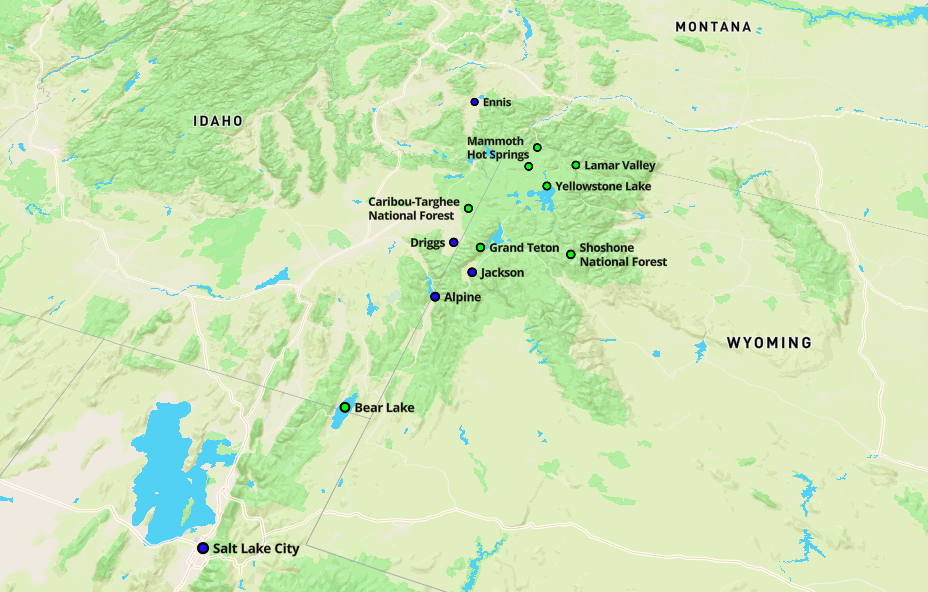La primera travesía a Ibiza de la temporada siempre es un gran momento. Una semana navegando y bañándonos por calas maravillosas, con un grado de desconexión del día a día máximo es para esperarlo con ganas. Este año se le añadía el hecho de que era la primera vez que lo hacía con el barco “nuevo”.
Después de experiencias pasadas, la ida la hicimos escalonada; lo de embarcar y hacer una travesía de 14 horas seguidas y sin dormir no es la mejor estrategia, más aún, cuando sólo hay un patrón a bordo. Así que esta vez, salimos de puerto a primera hora, y fondeamos en una boya en la Isla de Benidorm para desayunar y darnos el primer baño. Continuamos nuestra marcha cuando los primeros barcos que iban a pasar el día estaban llegando.

Seguimos costeando en dirección norte, acercándonos a ver la pequeña cascada que sale en la Sierra Gelada, y atravesando la bahía de Altea para fondear enfrente de Calpe para comer. Tuvimos algún problema con el enrollador de la génova en este punto, pero lo arreglamos en un par de minutos, y pudimos comer, darnos otro baño y echarnos una pequeña siesta antes de poner rumbo a Granadella, donde haríamos noche antes de cruzar a Ibiza. Tuvimos que parar antes en el puerto de Moraira, ya que descubrimos con cierto estupor que las dos bombonas de gas que teníamos estaban vacías. Después de esta parada imprevista llegamos a Granadilla, donde fondeamos en boya, y nos pudimos dar un buen baño antes de una noche en la que estuvimos totalmente solos en una cala rodeada de acantilados.
A las 5:00 de la mañana salimos hacia Ibiza. Las dos primeras horas de noche, y luego un amanecer de escándalo sobre el Mediterráneo. Cóctel perfecto, aderezado con un par de pesqueros de los que pasamos relativamente cerca, que empiezan a ser habituales en estas travesías. El resto de la travesía bastante tranquilo, desayuno en travesía, parchís (magnético, gran descubrimiento!), y alguna siesta; hasta que en la última hora y pico entró un fuerte viento de Levante que nos hizo bajar la velocidad un nudo por la corriente.
La idea era empezar con un plato fuerte a la par que tranquilo: fondear en una boya en la Isla d’Espalmador, un fondeadero especialmente tranquilo, que más que una cala, parece una piscina… Pero no contaba con que la última semana de junio ya es temporada alta… y no quedaban boyas. En media hora, el temor de no podernos quedar allí afortunadamente se disipó y se quedó libre un sitio al lado de la playa donde pasamos la noche, y las primeras horas de la siguiente mañana.
La siguiente parada fue Cala Saona, en Formentera, una de las calas con el agua más claras de todas las Pitiusas, y aunque llena de barcos, al ser muy amplia, teníamos nuestro espacio… Este fondeo sólo se vio alterado por los jaleos de algún barco cercano, y un accidente de un barco que acabó contra las rocas y ante lo que llegó, incluso, un barco de salvamento. Por la tarde, y tras conseguir in extremis un amarre en el puerto de Ibiza, navegamos un poco hacia el Sur, para luego volver a cruzar los Freus y llegar a Marina Botafoch a tiempo de ducha, paseo y cena en la ciudad.
A la mañana siguiente, emprendimos rumbo norte para fondear en Tagomago. Aunque la intención inicial era fondear en la cala Sur, no era muy practicable con el oleaje que había, así que probamos con la cala al Norte, que aunque muy profunda (fondeamos en más de 10 metros de profundidad), estaba cobijada de viento y marea, y tenía una zona de rocas interesante para bucear. Por la tarde, navegamos por el norte de Ibiza hacia Beniarrás y el Puerto de San Miguel, aunque nos decantamos por la segunda por espacio disponible (temporada alta?). Es una lástima que por la noche la paz se torne escándalo por los hoteles “todo incluido” que hay allí, pero disfrutamos mucho la mañana siguiente tranquilamente allí.
v
La siguiente parada fue Cala Salada, cerca de San Antonio, con sus características casas donde los pescadores guardaban (guardan?) sus barcas, y su entorno natural aislado de la civilización. Muchos barcos pasando el día, y una meteorología muy cambiante, que nos hizo estar pendientes de los barcos de alrededor. A media tarde, tras rodear Conejera, pusimos rumbo a Cala D’Hort, una de las calas clásicas para dar el salto a la Península, y con vistas a los dos islotes de Es Vedrà que, al verlos en el atardecer, se entiende que hayan originado tantas leyendas de energías y magía alrededor de ellos.
A las 2:30 de la mañana, emprendimos la vuelta hacia la Península, con viento y mar de popa, y esta vez con un rumbo más Sur para fondear de nuevo en la Isla de Benidorm de nuevo cerca de las 13:00. El lugar del primer fondeo del viaje fue también el último, ya que de ahí, volvimos a puerto, y empleamos el día siguiente en visitar Alicante por tierra… y en planear la próxima escapada.



























































































































